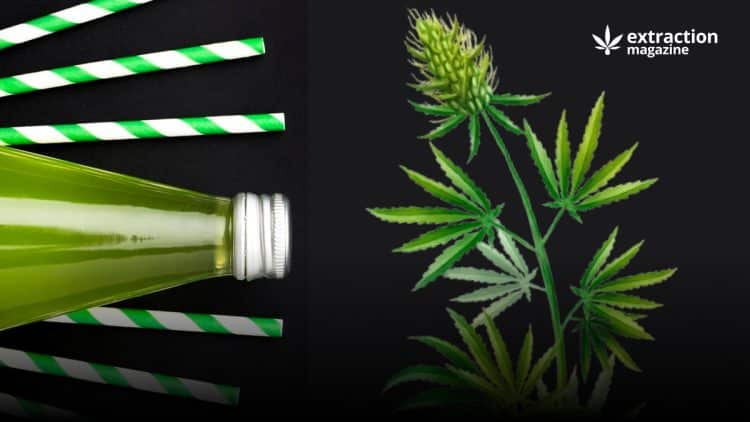Hemp is an amazing plant, and it’s known for a lot of things, but most people wouldn’t associate it with plastic. You may be surprised to learn that hemp has a long history as a material used for a lot of applications — from paper, to the sails on large sailing ships, ropes, and even clothing. Henry Ford even built a car with a body made entirely out of hemp. But, thanks to cannabis prohibition, this versatile plant was all but forgotten for decades. Now, with the multiple challenges facing the planet, people are turning the hemp once again for a solution.
The Plastic Problem
Plastic is practically ubiquitous in modern society. It’s easily the most common form of packaging that you’ll encounter when purchasing just about anything in a store.
That may be more true with the things most people buy every day, like groceries, than anything else. All electronics rely heavily on plastic. Most cars have loads of plastic components. Even a lot of fabrics are actually made, at least in part, of plastic.
Plastic is inexpensive. It’s extremely durable, flexible, and versatile. It’s not hard for plastic to be molded into just about anything. Look at 3D printing. Nearly all 3D printers print using plastic, and they’re frequently praised for their nearly limitless applications.
It’s not all good, though. For nearly the entire 20th century, people used plastic everywhere, and when they were done with it, threw it out.
Now, plastic pollution is destroying the environment. Plastic is killing animals, making habitats uninhabitable, and making its way into the food chain, causing untold health repercussions for human and animal life.
In fact, microplastics can be found in just about all water and, shockingly, have been discovered in human fetuses. To make matters worse, plastic takes hundreds — if not thousands — of years to break down. And, even when it does, it becomes — you guessed it — microplastics.
Plus, plastic is made using petroleum. Petroleum comes from oil, a non-renewable fossil fuel resource. The extraction and refinement of petroleum are both damaging to the environment.
Clearly, society’s dependence on petroleum-based plastic needs to stop.
Why Hemp Plastic?
For the most part, currently, the only way around petroleum-based plastic is to try to avoid it altogether, which is nearly impossible. Companies would need to overhaul everything to do with their packaging and distributions to get rid of plastic, which will likely never happen. So, the search is on for a viable alternative to petroleum for making plastic.
One possible way to solve the plastic problem is to use a biodegradable material to make plastic. This way, the pollution will, theoretically, be entirely organic and not harm the environment.
The plastic would also break down in the environment, eliminating the problem of plastic sitting around for hundreds of years. Cellulose, the material that makes up plant fibers, is a possible answer, and it’s currently the most promising type of bioplastic. Hemp contains a lot of cellulose, making it a great candidate for biodegradable plastics.
Hemp has some other great properties that make it an ideal choice:
- It’s a sustainable crop;
- It grows quickly;
- Doesn’t require much water;
- Can be grown without pesticides.
- Cleans and rejuvenates soil;
- And finally — it doesn’t even take up much space.
Remember how hemp has been used throughout history for its dense fibrous stalks? Those fibers are excellent for making strong textiles and even ropes. All that fiber comes from cellulose. So the very characteristic that’s made hemp a versatile material throughout history also makes it a great candidate for plastic today.
Will Hemp Solve Plastic Pollution?
It’s too early to tell if hemp stands a chance at replacing petroleum plastic, but there are a lot of factors working against it.
We Need to Make Hemp Plastic Cheaper First
First, the development of hemp plastics is lagging significantly behind petroleum. Most companies looking to hemp are not using 100% hemp plastic. Hemp plastics are extremely costly and don’t afford the same amount of options as their petroleum counterparts. In fact, most cellulose-based plastics remain very much at a developmental stage.
When a company advertises a “plant-based plastic,” they’re most likely using a plastic that’s less than 50% from plant sources.
It Should Be Truly Biodegradable Too
Furthermore, even if the main component of the plastic is cellulose — whether from hemp or another plant source — that doesn’t mean that the plastic is entirely biodegradable or environmentally friendly. There are a lot of other chemical components that can go into creating the plastic, and in order to make cellulose plastic, a lot of processing is needed.
So, WIll Hemp Solve The Plastic Problem?
While hemp plastics might be ideal for some applications, they’re simply not ready for others. Part of that is the cost. Hemp plastics cost significantly more than petroleum-based plastic. Government petroleum subsidies and the long-term prohibition of hemp are partly to blame for this. The relatively new state of the technology is another. It remains to be seen whether this will change with time.
It may, but a lot more work will need to be done before hemp is ready to be a viable replacement for petroleum-based plastics.
For now, the best thing people can do to fight the growing plastic pollution problem is to reduce their plastic use whenever possible.












